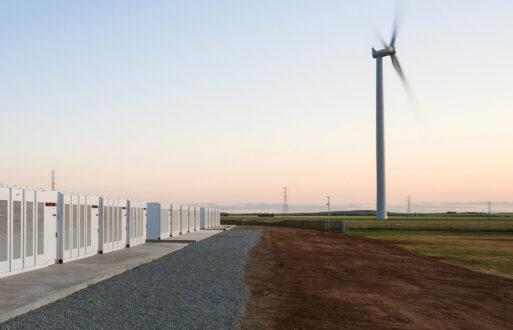ISO-New England (ISO-NE) is continuing to develop and make improvements to its market design to better address regional fuel security by October 15, 2019. The ISO discussed the problem statement, design objectives, and principles in depth in the ISO Discussion Paper on Energy Security Improvements.
ISO-NE’s solution encompasses the following three components:
- Multi-day ahead market: This expands the current one-day-ahead (DA) market, optimizing energy (including stored fuel energy) over a multi-day timeframe and producing multi-day clearing prices for market participants’ energy obligations.
- New ancillary services (A/S) in the day-ahead market: This component creates several new, voluntary ancillary services in the DA market that provide and compensate for the flexibility of energy ‘on demand’ to manage uncertainties each operating day.
- Seasonal forward market: Market participants may conduct a voluntary, competitive forward auction that provides asset owners with both the incentive and necessary compensation to invest in supplemental supply arrangements for the coming winter.
ISO-NE’s solutions are focused on achieving three meaningful outcomes:
- Strengthening generation owners’ financial incentives to undertake more robust supply arrangements;
- Rewarding resources’ flexibility which helps manage (and prepare for) energy supply uncertainties during the operating day:
- Efficiently allocating electricity production across multiple days from resources that have limited stored energy sources.
Overall, the market-based solution’s key design objectives are risk reduction, cost-effectiveness, and innovation.
ISO-New England’s Solution
ISO-NE’s Markets Committee Meeting has been discussing various design aspects of the solution to arrive at a consensus, and the June meeting’s focus was DA Ancillary Services and DA Energy Call Options.
The ISO is looking to add additional ancillary services to fill energy gaps that arise on and persist for different timeframes. As shared by ISO-NE, these capabilities fall into three operational categories:
- Operating reserves for fast-start/fast-ramping generation contingency response, which enable the system to promptly restore power balance (consistent with the timeframes established in applicable reliability standards);
- “Replacement” energy is needed to fill the bulk of an energy gap through the balance of the day and, if necessary, the next operating day as well;
- Resources to supply energy that cover the gap when forecasted electricity demand exceeds the demand cleared in the day-ahead market.
The three new ancillary services that ISO-NE is proposing to pursue as an energy call option in the day-ahead energy market (co-optimized with clearing energy schedules) are:
- Generation Contingency Reserves (GCR) – DA here means to assure operating reserve energy.
- Replacement Energy Reserves (RER) – DA here means to assure replacement energy.
- Energy Imbalance Reserves (EIR) – DA means to assure energy to cover the load-balance gap.
ISO-NE has also listed the detailed fundamentals underlying each of the three new ancillary services:
Mechanics
The product is an hourly energy call option construct awarded to units that submit and clear an option offer in the day-ahead energy market.
- The ISO will specify the option strike price ($/MWh) for each hour before option offers are submitted into the day-ahead market.
- Day-ahead energy schedules and option awards would be feasible, given the unit’s physical parameters.
- In real-time (RT), the option award will be ‘closed out’ at the delivery hour real-time LMP.
- The unit is not explicitly ‘exercised’ (dispatched/committed) based on its option award or based on the strike price.
Quantities Procured
Required quantities are not static
- GCR, EIR, and RER would be based, at a minimum, on the procedures currently applied by the ISO in developing a reliable next-day operating plan.
- A similar formulaic determination will be the basis for setting the required amount of energy call options for the different day-ahead ancillary service categories.
Obligation
Energy call options do not obligate a unit to provide a specific ancillary service in real time. The reason why a unit was awarded an option will generally translate into how the unit is economically utilized in real time.
- A unit awarded an option to satisfy the GCR requirement would tend to be economically designated for reserves in real time.
- A unit awarded an option to satisfy the EIR requirement would tend to be committed in the RAA process (day-ahead or intra-day) to help meet forecast load.
- A unit awarded an option to satisfy the RER requirement would tend to be used to cover any energy gap created when restoring real-time reserves after a contingency or due to forecast error.
Offer Price Formulation
Ideally, the strike price (K) should be set equal to the expected real-time energy price:
- The option offer price is based on a Market Participant’s expectations regarding RT energy prices.
- Unrecovered ‘fixed’ costs incurred to cover the option = fixed costs – RT net rev.
Here, “fixed costs” should be viewed as the total cost a unit incurs to be able to “cover the call” option position, minus the marginal costs of production (that it avoids if it does not operate in real-time).
Strike Price Determination
The strike price might be usefully set with reference to an external mark (e.g., a forward power price or forward fuel price). There is only one strike price in a given hour, regardless of the A/S requirement for which the option is cleared.
Three important elements guide how strike prices should be addressed:
- Known before offers are due. The numerical value of the strike price must be known to participants in advance of when they must submit offers in the day-ahead market
- At the money. The most efficient outcomes are obtained when the strike price is set at approximately the expected value of the energy price at which the options will settle (i.e., real-time LMP)
- Close is good enough. In practice, setting the strike price precisely at the money doesn’t matter much, within limits
Settlement for the New Ancillary Services
The mechanics, obligations, offer and strike price aspects, and settlements are the same for the three categories of ancillary services.
- DA Award credit: V * QDA option
- Closeout: Hourly DA energy call option awards open after the last (prompt) DA clear will be settled (closed out) against RT prices
- RT Closeout of DA Positions (debits): – (max {0, RT LMP – K} * QDA option)
- RT Delivery credit: V * QDA option + (RT LMP * QRT energy) + (RT RCP * QRT reserves)
Where:
- V is the new ancillary service clearing price ($/MWh)
- QDA option is the new ancillary service quantity (MWh)
- K is the strike price ($/MWh)
- RT RCP is the real-time reserve clearing price ($/MWh)
- QRT reserves are the real-time reserve designation (MWh)
Stay-tuned: Impact Assessment Ahead
ISO-NE has asked the Analysis Group to assess the impacts of the proposed Energy Security Improvements (ESI) with the goal of informing stakeholders about the expected impacts of the proposed rules on a variety of market outcomes. Findings will be shared during the July and August meetings of ISO-NE’s Markets Committee.
In the upcoming sessions, the discussion will continue on proposals from the ISO, as well as numerous other stakeholders. This will be followed by a review and voting of the ISO’s proposed tariff language to comply with the filing date of October 15, 2019.
PCI will be in attendance at various upcoming meetings as stakeholders debate the different aspects of the market-based solution to improve energy security in the region. PCI’s goal is to provide clients with (a) consultation and guidance while ISO-NE navigates changes to its market and (b) to ensure robust implementation of any deployed changes within our Settlements and Billing solution.







